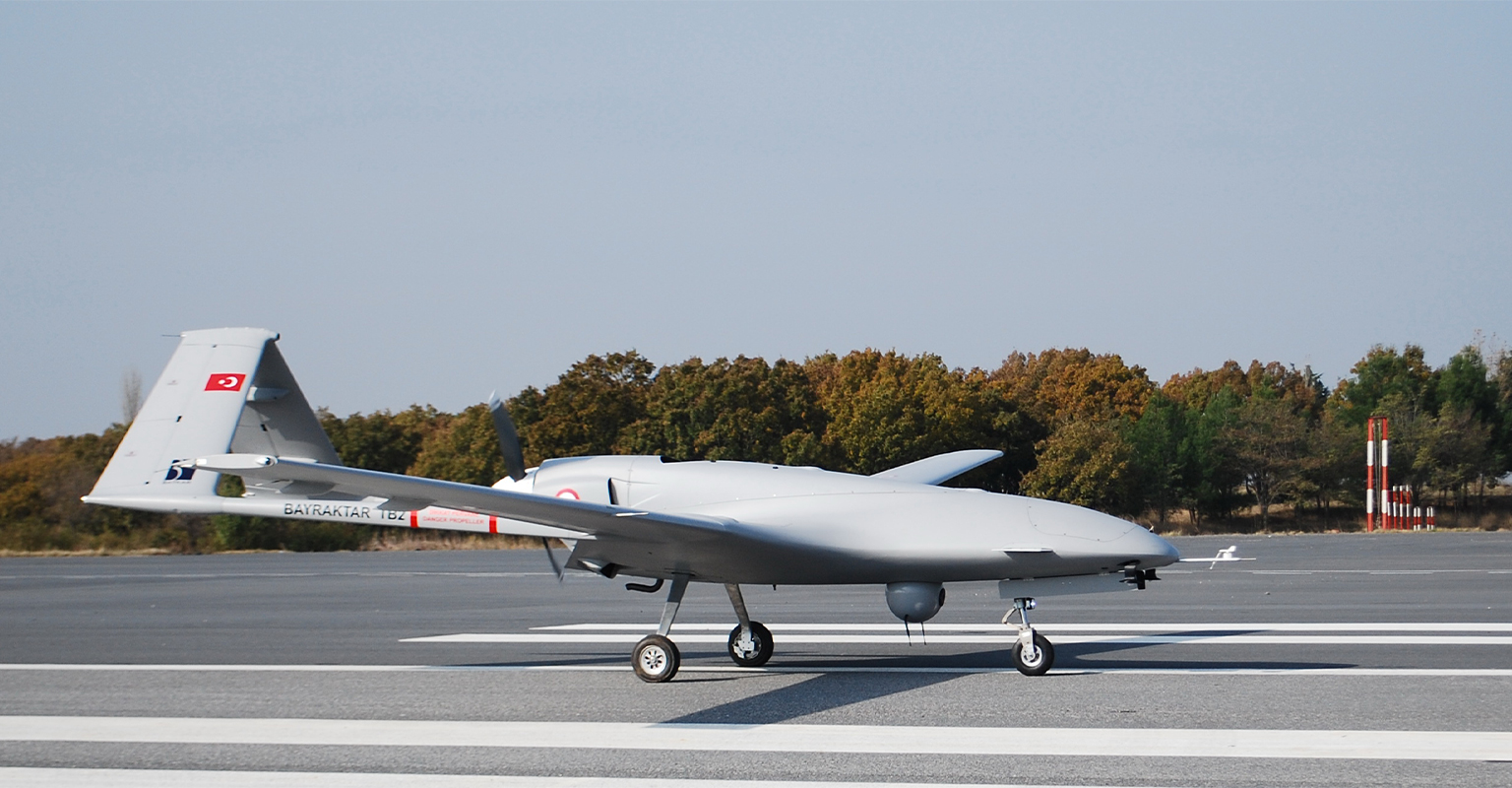Editor’s note: Borders are created by nation-states. If the relationship between the surrounding countries are amiable, borders serve the purpose to stop individuals from crossing over to the other side without authority. Conversely, if the relationship is hostile, borders either are an active warzone (eg. Gaza strip between Israel and Palestine), or are at the risk of becoming one (eg. Kashmir between India and Pakistan). Either of these pose a threat to the wild nature. Many species rely on periodic migration through a specific route that goes beyond the boundaries of nation-states. At its best, borders serve to stop that migration, risking the survival of the species. At its worst, borders turned into active warzones and the militarized activities are constantly destroying an entire landscape. Civilisation inherently infringes on the freedom of all living beings through these borders.
This article provides useful information from across the globe on how warzones are impacting wildlife. It also shows the threats of new projects such as the Belt and Road Initiative, purported to be based on “win-win cooperation” between countries, is still a warzone of competition with biodiversity. The peace parks proposed in this article can be used not only to rewild nature but also to deescalate conflict between neighboring nation states DGR supports and engages in rewilding the Earth. Meanwhile peace parks also pose some new questions: What happens if one, or both, states begin extracting resources beyond the regenerative capacity of the area? If one infringes the territory of the peace park, risking another conflict? What mechanisms can be put in place to deter such actions?
- Conflicts over disputed borders, increasingly exacerbated by climate change, are putting some of the world’s key biodiversity hotspots at risk.
- Even in countries that have avoided border wars, a global campaign of fence building — aimed at keeping out human migrants whose numbers are rising in an era of climate change and sociopolitical unrest — is causing widespread damage to vulnerable natural landscapes and migratory animal species.
- In potential conflict zones like the Himalayas, Eastern Europe, the Caucasus, and the South China Sea, this surging human march across national frontiers has already led to violence, and in some cases to open warfare.
- Border-straddling conservation zones known as peace parks offer a more sustainable way of managing border disputes than militarization and fence building. Peace parks on the U.S.-Canada border and in the Himalayas offer successful examples.
The Himalayan high peaks serve as a jagged wall dividing nuclear-armed neighbors — a physical barrier rising in places to more than 8,800 meters (29,000 feet) separating apocalyptically equipped nations divided by religion, politics, and many decades of bad blood.
But in ecological terms, the Himalayan plateau, the “rooftop of the world,” is a place of connection, especially for the wayward snow leopard (Panthera uncia), the alpine region’s apex predator and “tiger of the high mountains,” so dubbed by Aishwarya Maheshwari, an Indian wildlife biologist who has studied the elusive species for decades.
To Maheshwari, remote Himalayan ridges and culls don’t define a political divide, but serve as a thruway linking vast, unbroken habitat. Here, threatened wildlife — including the red panda (Ailurus fulgens), golden langur (Trachypithecus geei) and Himalayan brown bear (Ursus arctos isabellinus) — roam free, crisscrossing national frontiers. That’s an example, Maheshwari believes, that ought to be emulated by the peoples claiming the Himalayas.
In 2020, Maheshwari floated an outlandish but seductive proposition in the journal Science: Declare the snow leopard’s home territory a “peace park” — a gigantic, shared administrative border zone governed by the nations whose boundaries traverse the Himalayas, including India, China, Pakistan, Afghanistan, Bhutan and Nepal.
Photo by Frida Lannerström on Unsplash
An all-inclusive transboundary approach to conservation
For many aspects of wildlife protection, particularly tackling the trafficking of species, a transboundary approach proves highly practical. “Any kind of poaching that happens around the border areas can easily be escaped by border jumping,” explains Elaine Hsiao, who studies peace parks in Southern Africa and teaches at Ohio’s Kent State University in the U.S.
A transboundary approach, by contrast, allows for intergovernmental cooperation and the nabbing of transgressors on either side of national borders, denying criminals sanctuary.
To many experts, the peace park concept also offers an alternative to rising tensions — a shared, conflict-free administrative zone where states voluntarily surrender claims to contested territory to create an area of shared jurisdictional and ecological management.
“If peace parks were established [by following] the way of the snow leopard, we [could] achieve that peace we always talk about,” Maheshwari told Mongabay.
Several peace parks within the snow leopard’s range are already in place, including Khunjerab National Park in the Karakoram range (India and Pakistan), and the transboundary Sacred Himalayan Landscape (with multiple interconnected parks established by Nepal, India, Bhutan and China in cooperation with WWF).

Distribution of the snow leopard as of 2017. Could this vast territory — or at least significant parts of it — become the world’s highest-altitude peace park? Image by McCarthy et al. (2017) (CC BY-SA 4.0).
Peace parks have also been proposed in disputed and transborder Himalayan areas including the Everest region (known as Qomolangma in China and Sagarmatha in Nepal); Pamir Wakhan (between Afghanistan, Pakistan, Tajikistan and Kyrgyzstan), and the Altai Mountains (between Russia, China, Mongolia and Kazakhstan).
Transboundary peace parks have been shown to work: The undefended 6,416-kilometer (3,987-mile) border between Canada and the continental U.S. (excluding Alaska) was fought over in bloody intermittent conflicts for more than half a century, from 1754 to 1815. Today, four international peace parks sit astride that border: Peace Arch Park (Washington/British Columbia); Waterton-Glacier International Peace Park (Montana/Alberta); International Peace Garden (North Dakota/Manitoba); and Roosevelt Campobello International Park (Maine/New Brunswick).
Another example, far less peaceable in intent, is the demilitarized zone between North and South Korea. While still deadly to intruding troops, the nearly 70-year-old no-man’s land “has created a de facto 4-km-wide nature reserve spanning the Korean peninsula,” according to Maheshwari’s Science paper. It’s a safe haven for the endangered black-faced spoonbill (Platalea minor), Asia’s beloved wading bird.
A transnational jurisdictional agreement encompassing snow leopard habitat could serve as a means for “harmony between and amongst the countries in Central and South Asia,” guaranteeing both an ecological and economic bounty, Maheshwari told Mongabay. “We have not [fully] enjoyed being Asian — not like the neighboring continents of Europe or [North] America,” which possess a stronger sense of unity. The snow leopard offers that opportunity, he says.
But today, a snow leopard transnational park remains mostly a utopian goal. And the chances of achieving that vision seem to be diminishing, not growing.
Maheshwari laid out his plan in 2019 (it was published in 2020) against an increasingly turbulent geopolitical backdrop, as border tensions soared between nations rushing to exploit Earth’s last ungoverned border wildlands in search of scarce natural resources — in locales where wildlife unique to the world’s rooftop hold on in alpine refugia protected only by isolation and vertical terrain.
A world at war with humanity and nature
Conflict and violence are escalating in the 21st century, from the disputed battleground bordering Ukraine and Russia, to the cold war in the South China Sea; to the literal walls rising in the Sonoran Desert between the U.S. and Mexico, or similar barriers going up in Eastern Europe (between Poland and Belarus), or on the high-altitude battlefields of the Caucasus, and the India-China nuclear standoff region in the Himalayans. Such places are not only seeing intensified human suffering, but also the disruption of transboundary wildlands.
That’s especially true as weapons systems and military hardware allow combat in once inhospitable zones.
There is no more graphic example of this devastation than the current Russian invasion of Ukraine — a country holding more than a third of Europe’s biodiversity. Russian missile, air and artillery strikes targeted by high-tech drones have disproportionately wrecked Ukraine’s heavy industry, causing unbridled pollution, while ongoing hostilities have allowed for little assessment of harm to wild creatures.
Easy to overlook amid the present fighting is the ecological damage of an earlier Ukraine-Russia border conflict: In 2014, artillery duels and brutal trench warfare exploded in the Ukrainian region of Donbas, as Russian-backed separatists and the Kyiv government fought each other. This steppe-and-forest border region, with its high plant diversity, was pushed to the brink of ecological collapse by the war, according to the U.N. Environment Programme.

Part of the U.S border wall that bisects the Sonoran and Chihuahuan deserts along the boundary with Mexico. The barrier is part of a global push by wealthy Northern countries to assert control over sparsely populated borderlands and prevent a rush of sociopolitical and climate change refugees. Image by Steve Hillebrand/U.S. Fish and Wildlife Service via Wikimedia Commons (Public domain).
Today’s fighting in Donbas is “not only creating new [ecological] problems, but also digging up old problems and making them more and more serious,” explains Olya Melen-Zabramna of Environment, People and Law, a Ukrainian NGO.
As today’s battlefront shifts across the Donetsk and Luhansk border regions — the latter of which is now fully under Moscow’s control — both sides of the firing line are pockmarked by cratered conservation areas. The war is undoing a decade of effort by the Kyiv government to remediate landscapes contaminated by the toxic residues of unregulated Soviet-era coal and iron ore mines.
“The shelling causes accidental fires in the forest, and those fires are usually uncontrolled because our rescue agencies are not able to stop them because of the risk to their life,” Melen-Zabramna said. Forests are also now being contaminated with explosive anti-personnel mines, one of which blew up a forestry crew in April. Russian forces have also blown up air and water monitoring stations, she said.
Melen-Zabramna’s organization hopes Ukraine can find its way to environmental remediation after the war, following a path blazed by the nations of the former Yugoslavia on their battlefields. But with shells still falling, the prospect of an internationally negotiated Ukraine-Russia peace park seems far-fetched, though it would certainly help heal hearts and landscapes.

Russian missile, air, and artillery strikes targeted by high-tech drones have disproportionately wrecked Ukraine’s heavy industry, causing unbridled pollution, while ongoing hostilities have allowed for little assessment of harm to wild creatures. Image by Yevhen Timofeev via Pexels.
Border fences do not make good neighbors
The 21st-century firestorm now raging in Ukraine marks a grim continuation of the conflagrations dotting the 20th — which, like all wars, were ecologically destructive, but allowed a previously unseen level of devastation to be unleashed across entire landscapes.
Eighty percent of conflicts between 1950 and 2000 took place in biodiversity hotspots, Mongabay previously reported. The reason is simple: Biodiversity hotspots tend to be where humans have limited presence — often inhospitable places that mark geographically challenging boundaries between nation-states.
These border wars could soon get more numerous: A 2019 study in the journal Nature said that climate change contributed to 20% of conflicts over the last century and could lead to a fivefold increase in conflict over this century. Likewise, armed conflict is the single most important predictor of declines in animal population, according to the International Committee of the Red Cross.
With tensions rising along national borders, the U.N. has repeatedly warned there is little reason to assume that this century will experience less war — particularly if social unrest, exacerbated by climate chaos, drives an estimated 1.2 billion people from their homes by 2050.
Along rich-country perimeters, including the southern deserts of the U.S. or in the conifer forests of the eastern EU, the perceived threat of waves of human migrants has already led to new attempts to fence (and assert control over) wild areas once left in benign neglect.

From right: President Xi Jinping of China, President Vladimir Putin of Russia, and President Joko Widodo of Indonesia at the May 2017 Belt and Road International Forum. Image by the Russian Presidential Press and Information Office via Wikimedia Commons (CC BY 4.0).
New border fences in the U.S. Rio Grande Valley and Sonoran Desert pose physical boundaries — blockages that mammal species will need to cross as global warming renders old habitats uninhabitable, according to a 2021 study published in the Proceedings of the National Academy of Science (PNAS). That research found that increases in border fencing extent already correlate with decreasing numbers of pumas (Puma concolor) and coatis (Nasua narica) — and bisect the ranges of 180 more mammals.
In Europe, too, razor-wire fences closing the border between Croatia and Slovenia are killing herons and red deer, according to a 2017 study in the European Journal of Wildlife Research.
These barriers are just part of a rising tide of fences and border controls raised across Europe to keep out war, economic and climate change refugees fleeing Afghanistan, Syria and the African Sahel, according to a 2016 study in the journal PLOS Biology.
This increase in border fences has coincided with growing scientific recognition of the crucial role transboundary conservation plays in species migration. So even as nations aggressively try to block the flow of people over their borders, researchers are pleading the case for unobstructed wildland corridors allowing species movement to new, safer climes, according to the 2021 PNAS study.

The trillion-dollar Belt and Road Initiative promises to put China at the heart of a globally unprecedented transportation network and energy grid. Roads and railways, while promoting commerce, have also long provided the quickest routes by which troops move during national invasions. Image by PughPugh via Wikimedia Commons (CC BY 2.0).
Trouble brewing in the South China Sea
Harmful as migrant-blocking border security measures can be environmentally, they pale in comparison to the risks posed by borders that are being disputed in the name of national defense — or nationalist expansion.
In the South China Sea, for example, China has dredged up more than 100 square miles of healthy coral reef to create artificial islands, constructing airstrips and defense positions on what it considers its rightful maritime border. China is using these new artificial island outposts to assert sovereignty and flex its muscles toward its regional neighbors like the Philippines, while also helping lock down the Western Pacific for its long-distance fishing fleets that need to feed the nation’s 1.4 billion people.
As dangerous as this situation currently is, the cold war there regularly threatens to turn hot, with the U.S. and its ally the Philippines, along with Taiwan and Vietnam, unwilling to concede to Chinese claims of exclusive control over much of this part of the Pacific.
U.S. attempts to guarantee freedom of the seas “increase the risk of a [military] miscalculation or inadvertent action that could cause an accident or lead to an incident that in turn could escalate into a crisis or conflict,” according to a January 2022 report by the Congressional Research Service.
Such a conflict would raise the prospect of modern naval warfare and bombardment in a region that accounts for one-seventh of the global fish catch. A transnational marine peace park could provide an answer: a co-administered zone protecting commerce and nature.

A CIA map showing vast contested Asian areas. China and India claim patches of each other’s territory on opposite sides of the highest border in the world, in the Himalayas, raising the constant threat of a cold war turned hot. Image by CIA via Wikimedia Commons (Public domain).
China’s Belt and Road: The biggest infrastructure project ever
China’s land-based interests hold equal perils. In the Himalayas, it is engaged with India and Pakistan in a complex high-elevation land rush — complete with political maneuvering, a massive road-building effort and occasional open violence — amid a labyrinth of disputed alpine borders.
India’s Border Roads Organization, for example, is slated to build more than 3,400 km (2,100 mi) of highway along that country’s frontiers to counter Pakistan’s China-backed 3,000-km (1,800-mi) China–Pakistan Economic Corridor, a road, rail, and fossil fuel pipeline network.
This infrastructure explosion will be extremely damaging to the alpine environment, Indian ecologist Maharaj Pandit wrote in Science in 2020. In the high Himalayas, road workers are already burning scarce, extremely slow-growing native plants, to melt the asphalt needed for highway surfacing — burning that is also clearing the way for invasive shrubs.
But road building is just the beginning. The broader danger is that whenever people come into closer contact on a tense border, there is, as the Congressional Research Service warns, ever more risk that something will go wrong.
Conflict already flares there: In 2020, Chinese and Indian road-building crews got into a deadly brawl along an unmarked section of the border, combating each other with fists, stones and “nail-studded clubs,” leaving 24 dead, according to the BBC. The region, along with biodiversity and the cause of world peace, could clearly benefit from cooperative rather than competing infrastructure projects and transnational conservation projects in the Himalayas.

China’s Belt and Road Initiative showing China in Red, the members of the Asian Infrastructure Investment Bank in orange, and the six proposed corridors of the Silk Road Economic Belt, a land transportation route running from China to Southern Europe via Central Asia and the Middle East, and the 21st Century Maritime Silk Road, a sea route connecting the port of Shanghai to Venice, Italy, via India and Africa. Image by Lommes via Wikimedia Commons (CC BY-SA 4.0).
The 21st-century battlefield comes to the world’s wilds
A saving grace of past border wars was the remoteness of their battlefields: Intense conflict there required more troops, military hardware and transport than it was sometimes worth providing. This often bought time for cooler heads to prevail, as happened when leaders in New Delhi and Beijing agreed to pull back their forces from the Himalayan border in 2021.
But the range and availability of new weapons, like Turkey’s Bayraktar TB2 drone, make such destructive escalation more likely. This was demonstrated in 2020, when the small Eastern European countries of Armenia and Azerbaijan went to war over the disputed mountain valleys between them.
For almost a generation, the nations’ contested border, a Soviet-era provincial boundary, had been a largely quiet point of contact along an old cease-fire line from a previous war. But in September 2020, a skirmish broke out, and Azerbaijan, newly armed with flotillas of Turkish Bayraktar and Israeli kamikaze drones, launched a full-scale invasion into the disputed lands of Nagorno-Karabakh.Azerbaijani drones broke the Armenian army apart from the air, and burned hundreds of square kilometers of the high forests with white phosphorous bombs as they hunted disintegrating army units among the trees.
Both sides decried the resulting ecological damage. And in a bit of dark irony, the mascot trotted out in this propaganda battle was a boundary-crossing cousin of the charismatic snow leopard that biologist Maheshwari proposed as a symbol of a peaceful Himalaya.
Armenian war propaganda images featured the Caucasian leopard (Panthera pardus tulliana), Europe’s last big cat and a reclusive resident of the borderlands between the two countries that it shares with Eurasian lynxes (Lynx lynx), Caspian Sea wolves (Canis lupus campestris) and Eurasian brown bears (Ursus arctos arctos).
Rather than providing a reason to stop fighting, reports of ecological damage helped fuel it. The Conflict and Environment Observatory found that competing claims of “ecocide” became grist for the propaganda war, as online partisans on both sides blamed each other for the highlands destruction, and urged their soldiers on.
One of the most hotly disputed aspects of the Armenian-Azerbaijani PR war was the question of who gets custody over the highland lake of Sarsang, currently split between the two countries.
In the case of this Armenia-Azerbaijan water conflict, “the candid goal of both authorities is not to reach a resolution to address some urgent problems of the local communities, but rather use this issue as a means to win on political terms by labeling the other as an aggressor or as non-cooperative,” according to a study published in the Journal of Conflict Transformation.
The lake in question, a shared border resource demanding co-jurisdiction management, would make an ideal candidate for a transnational peace park, experts say. But bilateral bad blood and bad faith also suggest the extent to which peace, or shared administration, requires far more than the absence of conflict.

Cheap but deadly armed drones like the Turkish-made Bayraktar TB2 have helped bring newly destructive air warfare to disputed alpine and remote regions where it would have once been costly and nearly impossible. Image by Bayhaluk via Wikimedia Commons (CC BY-SA 4.0).
Peace must be the point
In truth, proposed peace parks often fail as ecological solutions when the peace aspect is treated as an afterthought, Hsiao of Kent State told Mongabay. “You end up with these places that are kind of compromised on all the objectives.”
In Southern Africa, for example, or across South America, many countries have far better relationships with their neighbors than with many of their own citizens.
“You have high level [nation-state] buy-in and then it’s just got so many issues because things at the local level are not resolved,” Hsiao said. The result can be “paper parks,” which are colored solid green on maps but are divided by acrimony on the ground.
What works better than a top-down approach, she wrote in 2019, is a bottom-up approach: one that begins with getting local communities to agree on cross-border conservation goals. “Transboundary conservation cannot be imposed from above in violent landscapes, or it may not survive tensions,” Hsiao wrote.
Local communities also have far more skin in the game than saber-rattling national administrations: For example, tens of thousands of ethnic Armenians fled the Nagorno-Karabakh region as the 2020 war spread devastation among their homes.

The Artsakh Mountains: This disputed, forested range lies between Armenia and Azerbaijan; it is controlled by the former but claimed by the latter. It was the setting for a destructive 2020 war that foreshadowed the current war in Ukraine. Image by sedrakGr via Wikimedia Commons (CC BY 3.0).
In Latin America’s Andes Mountains, another possible model of accord can be found in another high-altitude, hydrologically significant park, in a once-violent border region: the Cordilleras del Condor located between Ecuador and Peru.
Leaning on close cross-border relationships between the Indigenous Shuar, Awajun and Wampis peoples, a benefit of the region’s arbitrary boundaries, the NGO Conservation International brokered a lasting border peace that has grown over the subsequent two decades into a healthy framework of shared regional management between the two countries.
Borders can offer fertile ground for the seeds of conflict. But handled diplomatically, they can also seed peace in its most constructive, proactive form — through an ethic of cooperation between local communities and national capitals alike, say peace park advocates. Moreover, peace parks could provide a hedge against the catastrophic conflicts that may loom with destabilizing climate change.
“We as humans identify and recognize borders, but obviously wildlife don’t,” Indian ecologist Maheshwari concluded, making his case yet again for a Himalayan reserve.
“Nowhere in the conservation book does it advocate that species should be confined to one area,” he said. “Otherwise, there’s no meaning or sense to the word wildlife — animals are not wild if they’re confined to one piece of land.”
Perhaps, he argues, the time has finally arrived for the world to embrace peace parks.
Featured image: via Pexels



As we used to say in Earth First!, War is bad for all species. Even pre-industrial war, but of course industrial war is worse.